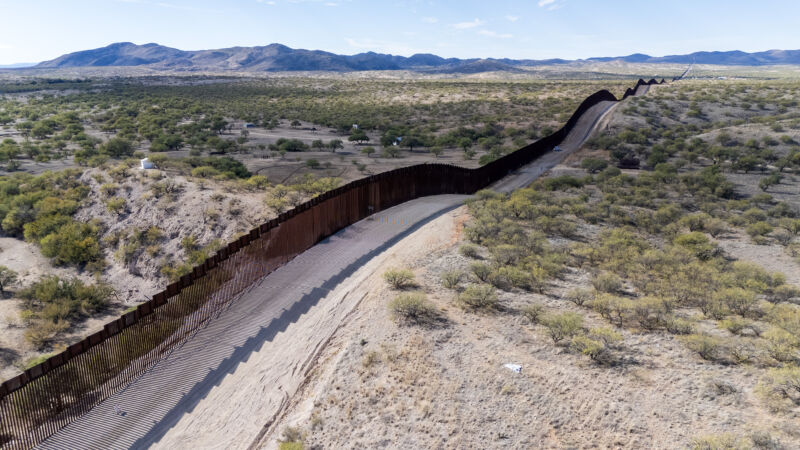Nature interrupted: Impact of the US-Mexico border wall on wildlife

Enlarge / This aerial picture taken on December 8, 2023, shows the US-Mexico border wall in Sasabe, Arizona. (credit: VALERIE MACON/AFP via Getty Images)
In a vast stretch of the Sonoran Desert, between the towns of San Luis Río Colorado and Sonoyta in northern Mexico, sits a modest building of cement, galvanized sheet metal, and wood—the only stop along 125 miles of inhospitable landscape dominated by thorny ocotillo shrubs and towering saguaro cactuses up to 50 feet high. It’s a fonda—a small restaurant—called La Liebre del Desierto (The Desert Hare), and for more than 20 years, owner Elsa Ortiz Ramos has welcomed and nourished weary travelers taking a break from the adjacent highway that runs through the arid Pinacate and Grand Desierto de Altar Biosphere Reserve.
But the dedication and care of this petite woman go beyond her simple menu. Every two weeks, she pays out of pocket for a 5,000-gallon tank of water to distribute to a network of water troughs strategically placed in the area. By doing so, she relieves the thirst of bighorn sheep, ocelots, pronghorn, coyotes, deer, and even bats that have been deprived of access to their natural water sources.
“The crows come to the house and scream to warn us that there is no more water ... it’s our alarm,” says Ortiz Ramos in her distinct northern Mexico accent. Her words sound straight from an Aesop’s fable, but they take on stark realism in this spot. Covering large parts of Arizona, California, and the Mexican states of Baja California and Sonora, the Sonoran Desert—along with the Lut Desert in Iran—was cataloged in 2023 as having the hottest surface temperature on the planet, at 80.8° Celsius (177° Fahrenheit).